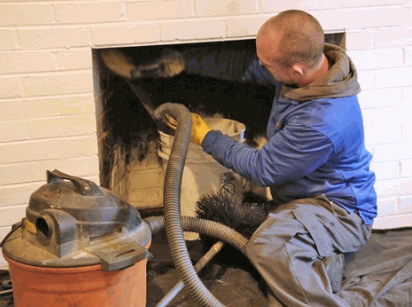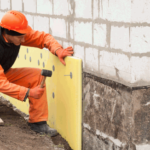Are you tired of seeing unsightly soot stains on your walls? Do you want to know how to effectively remove them without damaging your paint or wallpaper? Look no further. This article will provide you with practical tips to help you get rid of stubborn soot marks and keep your walls looking clean and fresh. Say goodbye to sooty walls and hello to a spotless home.
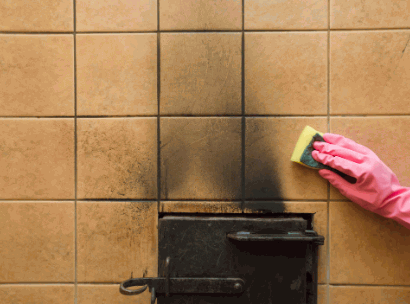
What Is Soot?
Soot is a black powdery or flaky substance consisting largely of amorphous carbon, produced by the incomplete burning of organic matter. It can accumulate on walls due to candle or fireplace smoke, leaving unsightly stains. When dealing with soot on walls, ensure proper ventilation and use protective gear.
Try dry cleaning methods like vacuuming with a brush attachment or using chemical sponges. For stubborn stains, consult professional cleaners.
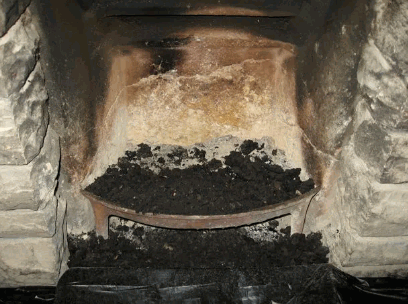
What Causes Soot To Build Up On Walls?
Soot buildup on walls can be attributed to various factors, such as burning candles, indoor smoking, the use of unvented gas heaters, and a malfunctioning fireplace or wood stove. The incomplete combustion of fossil fuels can also contribute to the accumulation of soot on walls and ceilings. Furthermore, cooking oils and greases can release particles that contribute to the formation of soot on surfaces within the kitchen.
Take a look: Can You Clean With Baking Powder
What Tools Do You Need To Clean Soot Off Walls?
When removing soot from walls, it is important to have the necessary tools on hand. These tools include:
- a dry-cleaning sponge
- a vacuum with a brush attachment
- rubber gloves
- a bucket
- mild soap
- warm water
- clean cloths
For added protection, consider using a drop cloth and wearing a mask.
Pro-tip: Before beginning the cleaning process, test the solution on a small, inconspicuous area to ensure it does not cause any damage to the wall’s surface.
How To Clean Soot Off Walls?
Dealing with soot on walls can be a daunting task, but with the right approach, it can be easily remedied. In this section, we will guide you through the steps of cleaning soot off walls effectively and efficiently. From preparing yourself and the surrounding area to scrubbing off stubborn stains, we’ve got you covered. Just follow these steps and you’ll have your walls looking clean and fresh in no time.
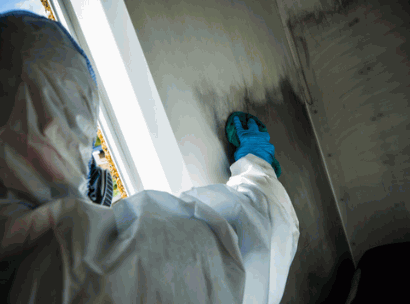
Step 1: Protect Yourself And The Surrounding Area
- Make sure to wear protective gear such as gloves, goggles, and a mask.
- Cover the floor and nearby furniture with a drop cloth to avoid any potential staining.
- For proper ventilation, open windows and doors.
- Use painter’s tape to protect trims, edges, and fixtures from the cleaning solution.
Step 2: Remove Loose Soot With A Dry Sponge Or Vacuum
- For step 2, use a dry sponge or vacuum to gently remove loose soot from walls.
- Hold the vacuum hose slightly above the soot to avoid spreading it.
- If using a dry sponge, dab it onto the soot to lift it off the surface.
- Work methodically from top to bottom to prevent re-soiling areas.
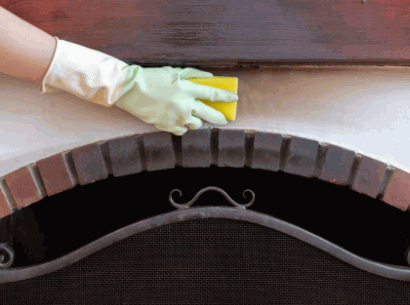
Step 3: Mix A Cleaning Solution
- Prepare a cleaning solution by mixing warm water with a small amount of mild dish soap or a specialized soot remover.
- Ensure the cleaning solution is well mixed and forms suds when agitated.
- Use a bucket or spray bottle to hold and apply the cleaning solution.
- For an eco-friendly option, consider using a natural cleaning solution like vinegar and water.
Step 4: Test The Solution On A Small Area
- Before applying the cleaning solution to the entire wall, make sure to test it on a small, inconspicuous area to ensure it does not cause any damage or discoloration.
Fact: Soot, also known as black carbon, is a hazardous air pollutant that contributes to global warming and poses serious health risks.
Step 5: Scrub The Soot Stains With The Cleaning Solution
- Prepare the cleaning solution by mixing warm water and a mild detergent.
- Dip a sponge or cloth into the solution and wring out excess liquid.
- Gently scrub the soot stains in a circular motion, starting from the bottom and working upward.
- Rinse the sponge or cloth frequently to avoid redistributing the soot.
- Change the cleaning solution if it becomes too dirty to be effective, following step 5.
Step 6: Rinse The Walls With Clean Water
- Prepare a bucket of clean water
- Use a clean sponge or cloth to gently rinse the walls with clean water
- Change the water as needed to ensure cleanliness
- Dry the walls with a clean towel
After rinsing the walls with clean water, make sure to thoroughly dry them to prevent any further accumulation of soot. It may also be helpful to use a dehumidifier to maintain optimal humidity levels in the room and prevent the growth of mold.
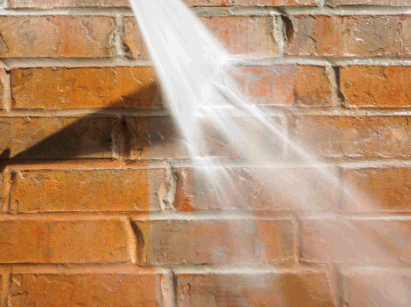
Step 7: Dry The Walls With A Clean Towel
- After rinsing the walls with clean water, follow Step 7 and use a clean towel to dry the walls to remove any remaining moisture and prevent water spots or streaks.
How To Prevent Soot From Building Up On Walls?
Soot buildup on walls not only looks unsightly, but it can also pose health hazards and damage the integrity of your home. The key to preventing soot from accumulating on your walls is to be proactive and take preventative measures. In this section, we will discuss five effective ways to prevent soot from building up on your walls. From regular cleaning to proper ventilation, these tips will help keep your walls clean and healthy.
1. Regularly Clean And Dust The Walls
- Regularly inspect walls for the accumulation of soot.
- Use a soft-bristled brush or vacuum with a brush attachment to gently remove dust and soot.
- Wipe walls with a microfiber cloth or sponge to further eliminate any residue.
- Consider using a mild detergent solution to clean stubborn soot stains.
- Ensure proper ventilation to reduce the buildup of soot.
After following these steps, a homeowner noticed a significant reduction in soot buildup, creating a cleaner and healthier living environment.
2. Use A HEPA Air Filter
- Choose a HEPA Air Filter
- Check the Filter’s MERV Rating
- Properly Size the HEPA Air Filter
- Install the HEPA Air Filter
- Regularly Replace the HEPA Air Filter
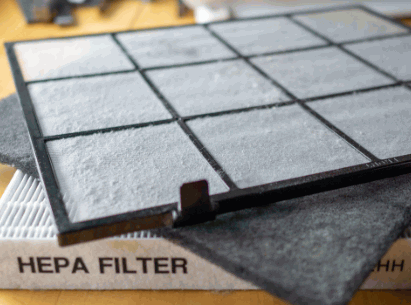
3. Avoid Burning Candles Or Incense Near Walls
- Place candles or incense at a safe distance from walls to avoid soot buildup and reduce the risk of damage.
- Use candle holders or incense burners with proper ventilation to minimize the emission of soot.
- Consider using electric alternatives, such as flameless candles, to eliminate the production of soot entirely.
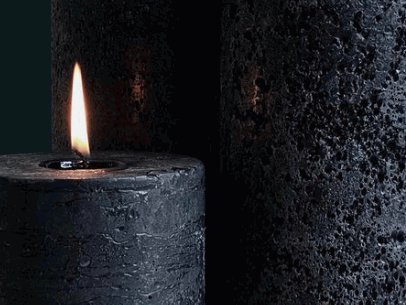
4. Properly Ventilate Your Home
- Install Exhaust Fans: In kitchens and bathrooms, make sure to properly ventilate your home by using exhaust fans to remove moisture and pollutants.
- Open Windows: Allow fresh air to circulate, reducing indoor air pollutants and improving ventilation.
- Use Air Purifiers: Employ air purifiers to capture airborne particles and improve indoor air quality by removing pollutants.
- Maintain HVAC Systems: Regularly service heating, ventilation, and air conditioning systems to ensure proper ventilation and airflow throughout the home.
- Monitor Indoor Humidity: Keep indoor humidity levels between 30-50% to prevent moisture buildup and mold growth, which can affect air quality and ventilation.
5. Have Your Chimney Inspected And Cleaned Annually
- Schedule a professional chimney inspection and cleaning annually to ensure that soot buildup is prevented and potential fire hazards are avoided.
